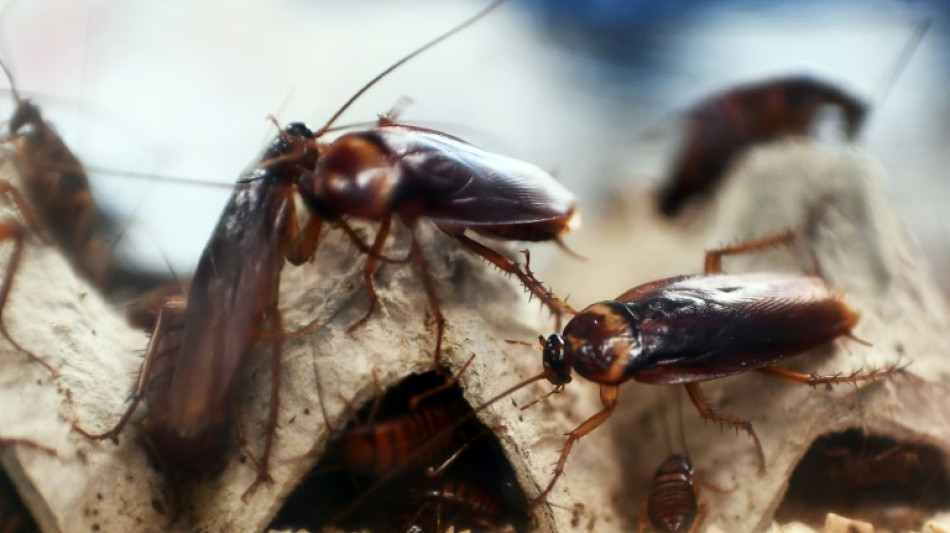

Sugar traps force cockroaches to adapt new sex 'gifts'
Humans using sugar in cockroach traps has inadvertently led to female roaches being turned off by the sugary "gifts" males use to entice them into mating.
But don't celebrate the demise of cockroaches just yet -- some males have adapted new ways to continue wooing females, including by shortening the length of foreplay, a study said on Wednesday.
The small but stubborn German cockroach is the most common species of the insect, lurking in kitchens and bathrooms across the world.
Glucose, a form of sugar, has long been used to bait these cockroaches into deadly traps.
Thirty years ago, researchers first noticed that some German cockroaches had developed an aversion to glucose and were avoiding the traps.
This distaste for glucose may save them from death, but it has also put a damper on their sex life, according to the study published in the journal Proceedings of the Royal Society B.
Male cockroaches have a very particular manoeuvre to attract females into mating.
They lift their wings and expose a special gland that secretes a "nuptial gift," a cocktail which includes the sugar maltose.
The female jumps on the male's back to lap up the treat, which keeps her occupied "long enough for the male to extend his abdomen under the female and engage her genitalia," the study said.
However the saliva of the females quickly converts the maltose into glucose.
Females who have developed an aversion to glucose jump off "before the male can grasp the female genitalia," potentially affecting the future reproduction of the species, the study said.
But never fear: male cockroaches who have also evolved an aversion to glucose can now get around the problem.
These males have changed the composition of their nuptial gift, slashing the glucose content and more than doubling the amount of maltotriose.
This sugar is both hugely popular with females and converts into glucose much more slowly than maltose.
The males also shortened the courtship process, allowing less times for the glucose conversion to take place.
Glucose-averse males start mating in an average of 2.2 seconds -- almost twice the speed of other cockroaches, the study said.
The big losers are ordinary male cockroaches, who now secrete a gift too rich in glucose and take too long to start mating for the taste of many females.
The authors of the study from the North Carolina State University emphasised it was important to understand glucose aversion in cockroaches to develop new ways to control their numbers.
Some scientists have recommended glucose no longer be used in cockroach traps.
M.Fierro--IM



